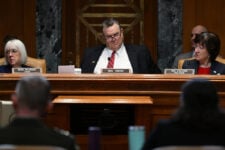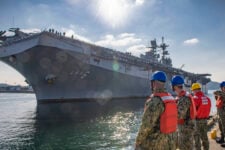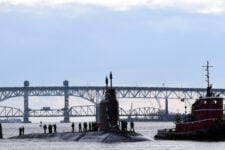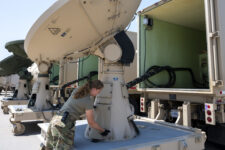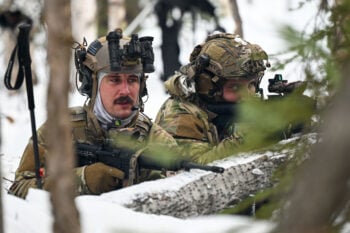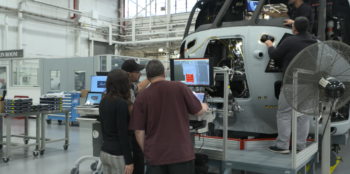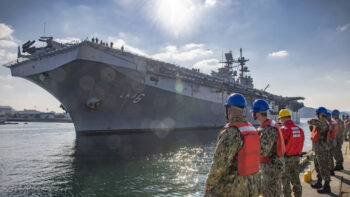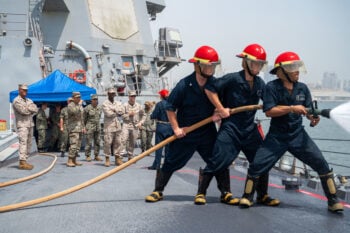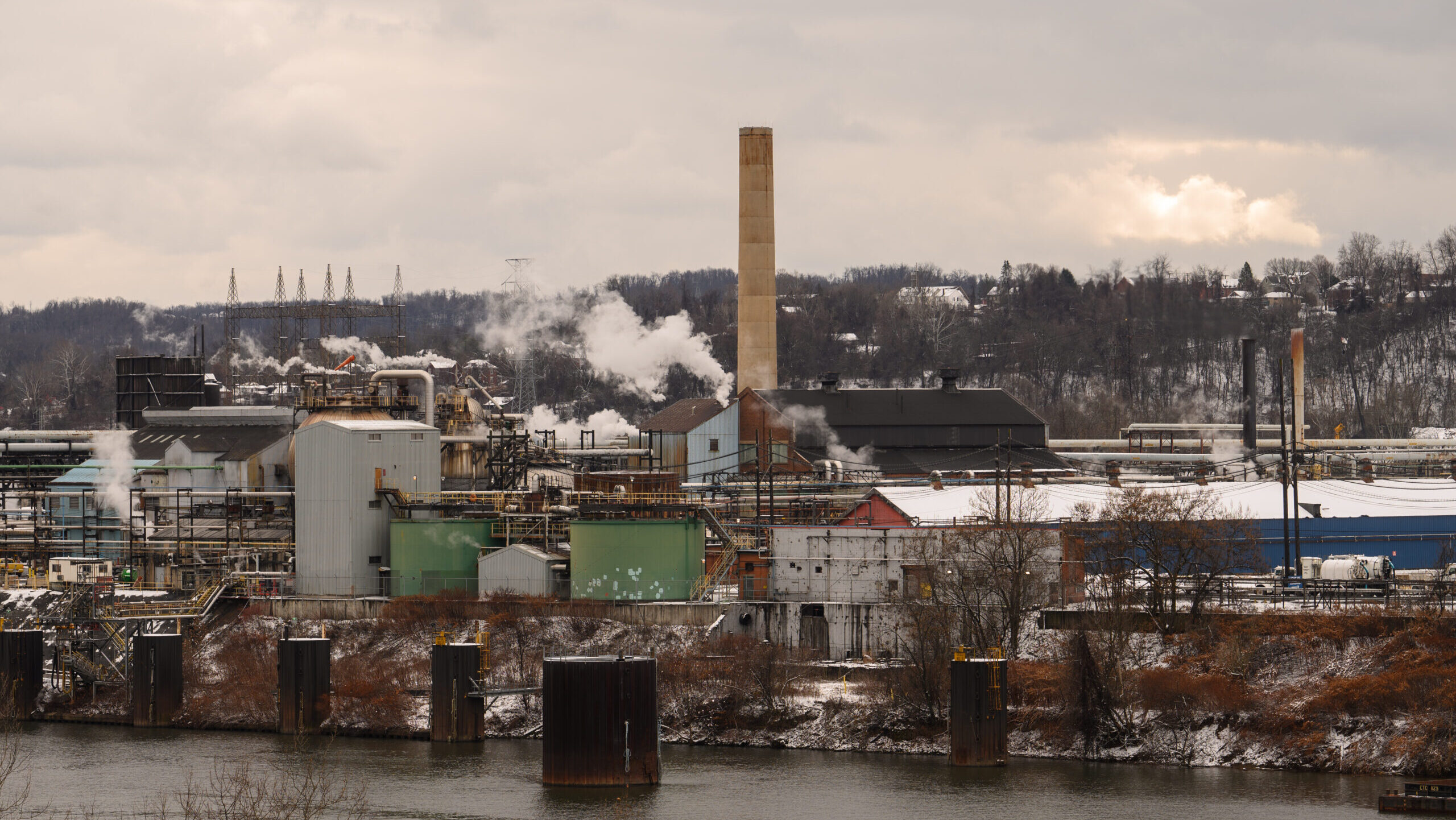
The United States Steel Corp. Clairton Coke Works in Clairton, Pennsylvania, US. The United Steelworkers is urging US regulators to scrutinize Nippon Steel Corp.’s $14.1 billion takeover of United States Steel Corp. as it rebukes the iconic American company for agreeing to sell to the Japanese producer. Photographer: Justin Merriman/Bloomberg via Getty Images
Having American-made steel ready for defense programs is a national security imperative – at least according to the steel industry and supporters in Congress. But is that correct? In this op-ed, Bill Greenwalt, a former DoD industrial official, argues steel plays a much smaller role for the defense industry than many think.
The proposed purchase of JP Morgan’s legacy company, US Steel, by Japanese steel maker Nippon Steel has sent America Firsters (both Republicans and Democrats) into a tizzy. Reaction has been visceral across party lines: Sen. JD Vance, R-OH, linked blocking the deal to the “security and prosperity of the United States.” The head of the steel workers union stated he received “personal assurances” from President Joe Biden that the White House has their backs, and even environmental groups have come out against the deal. Opposing the proposed merger, Sen. John Fetterman, D-PA, stated, “Steel is always about security.”
Not surprisingly, the case is now being considered before the Committee on Foreign Investment in the United States (CFIUS), the federal body that reviews foreign investment for national security reasons. And that may make political sense, as the steel industry has been coddled with protections, tariffs and domestic source preferences. But despite what Fetterman and others claim, the national security argument for steel is actually extraordinarily specious.
This belief is based on a series of falsehoods and misplaced expectations of what the steel industry would actually do for national defense in an emergency. And it is important that as the government weighs its case, it has a clear-eyed understanding of the role US-produced steel actually plays for the Department of Defense.
Historically, the Pentagon has bought significantly less than 1 percent of the US steel industry’s output, although the industry believes that number is closer to 3 percent. Even if you take industry’s number as gospel, that’s simply not a massive amount. The steel that is most important to DoD is of high quality and bought at low volumes, primarily from two plants in Pennsylvania that produce the armored plate for Navy ships and Army ground vehicles. These plants are currently owned by Cleveland-Cliffs, a company that, seeing no profitable options to invest in its plants or its workers, recently announced it will engage in high levels of stock buybacks. (The company did offer $7 billion for US Steel but was outbid by Nippon Steel’s $14 billion tender.)
There is no question that the plants that still produce defense-grade armor are critical to national security and have been the recipients of Defense Production Act (DPA) subsidies to ensure that they stay in business and support DoD. The rest of the steel industry, however, has not only been mostly worthless to national security — it has arguably become detrimental to it. This is due to the adoption of domestic source restrictions that torture DoD’s supply chain to buy de minimis levels of steel found in products such as casings, fasteners and spare parts, often at higher prices than it could buy from abroad. The cost to police DoD’s supply chain to comply with mandated domestic sourcing requirements is enormous for the minimal amount of metal and money involved in military products that are not ships or armored vehicles.
The national security argument made for forcing this on the Pentagon has always been that we would need the industry in place if we are ever in a conflict and had to build more ships and armored vehicles at scale. This same argument has also been made to keep in place tariffs and other protectionist measures that benefit the 97-99 percent of the US steel industry that does not directly support DoD.
The reality is the steel industry can be depended upon to do that which they demonstrated in the Mine-Resistant Ambush Protected (MRAP) program during the Iraq and Afghanistan conflicts: That is to say, very little.
The MRAP program’s estimated $50 billion cost likely made it the largest emergency steel-centric defense program that the US has embarked on since the production of Liberty ships in WWII. At the initiation of MRAP production, the US didn’t have enough quality specialty steel to support the program. As Deputy Undersecretary of Defense for Industry Policy during that initial phase, I was tasked to find it.
One would have thought that an industry so heavily invested in its relations with the US government and reliant on protectionist measures for decades would have jumped at the opportunity to show its patriotism and protect American servicemembers from being blown up by roadside bombs. That was not the case. Despite entreaties from DoD, the US steel industry (with the exception of one firm) declined to make the investments to support our men and women in uniform. As a result, after considering its rights to compel production under DPA and finding them lacking, DoD went abroad with cap in hand for steel–to Sweden, Germany, Israel, and Australia.
When DoD urgently needed more steel, the US industry basically told Uncle Sam to pound sand. Our allies then bent over backwards to help us, when our own industry would not.
One US company did do something, and that was Oregon Steel. They had a process that could produce the quality of steel that the MRAPs needed but it would require the importation of steel ingot from Mexico to fuel their mills. This would require a waiver from Buy America restrictions that mandated that all steel DoD uses be not only produced, but smelted in the US. US steel industry lobbyists vehemently opposed any such waiver. DoD eventually granted the waiver, thereby increasing MRAP-relevant steel production by 40 percent. The brutalist of ironies: The company was purchased by Russians in 2007. The irony that the Russians stepped up to protect our troops while US industry did not was probably not lost on the Kremlin.
Which brings us back to CFIUS. The decision-makers around the CFIUS table should know this history and understand that the steel industry did not have DoD’s back in the past. If it didn’t then, why would it have it now? We should stop wrapping the industry (except for two very important plants) in the American flag and recognize that all of the subsidies, tariffs and protectionist measures are political contrivances and not about a national security need.
Political arguments to protect the steel industry are an important and legitimate form of discourse and debate, but should stand on their own. There is no reason for steel advocates to provide misleading information about their industry’s importance to national security as if this were the 1890s. There is no national security reason for CFIUS to reject the US Steel-Nippon Steel deal, but if the Treasury Department does go down this path, the CFIUS process will be forever tainted and politicized. That is not good for national security or anything else. Our credibility is on the line and allies and investors will be looking closely at any decision.
William C. Greenwalt is a nonresident senior fellow at the American Enterprise Institute and a former deputy undersecretary of defense for industrial policy.
HASC pushes for reciprocity guidance for cloud computing in draft NDAA language
The legislation proposes that if one office in the department officially deems a “cloud-based platform, service, or application” is sufficiently cybersecure to use, then all parts of DoD can accept this ATO.



